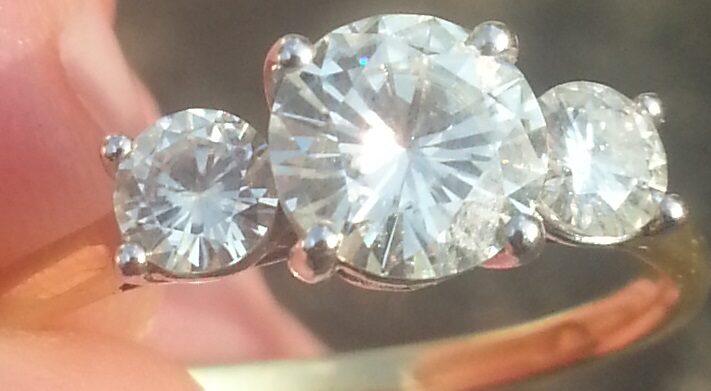
Diamond sales have steadily been dropping over the last few years, with experts worrying it could be because millennials are starting to shun the stone associated with marriage proposals.
One big reason is the blood diamond trade. There is an international agreement that bans conflict stones, but due to a loophole, the mined diamond industry is still allowed to employ child labour, and the industry still fuels violence in developing countries. There is no way of knowing your diamond is – directly or indirectly – contributing to enslavement and murder.
For this reason, many people are looking towards alternative options to diamonds for engagement rings. Luckily, there is a huge variety of beautiful options to choose from.
What can you use instead of diamonds?
*Lab-made diamonds: These labs replicate extreme heat and compression of the earth’s crusts in approximately six to 10 weeks. What you get is an environmentally-friendly, conflict-free diamond that is also easier on the wallet.
*Moissanite: A crystal that occurs naturally in meteorites, moissanite is almost as hard and dense as a diamond, but is better looking! They have more brilliance than a diamond, and recent innovations to how are made mean it very difficult to distinguish them from a mined diamond.
*Gemstones: Rare gemstones such as tanzanite, sapphire, ruby and emeralds are all more rare than diamonds, but much more affordable. Rings with these stones will also be more unique.
*A Claddagh ring: If you want to go truly traditional, a Claddagh ring is the way to go. A Claddagh ring has deep cultural significance, as opposed to the diamond ring (which was a marketing ploy by De Beers in the early 1900s). The Claddagh rings features two hands holding a heart, and topped with a crown. These symbols represent friendship, love, and loyalty. These rings date back to the 1600s.
